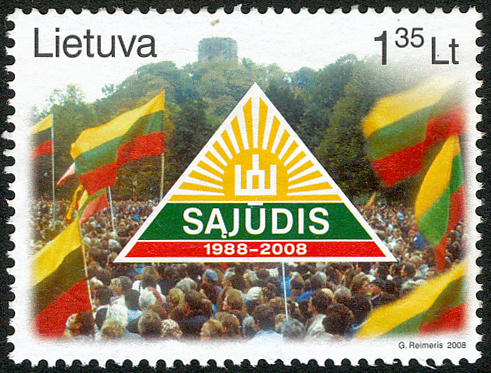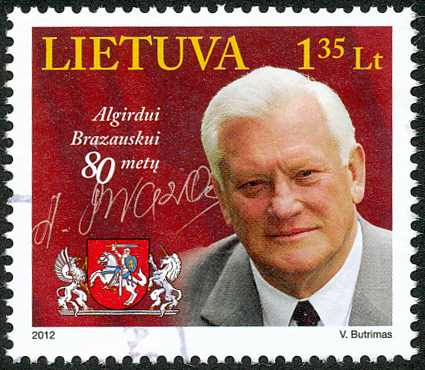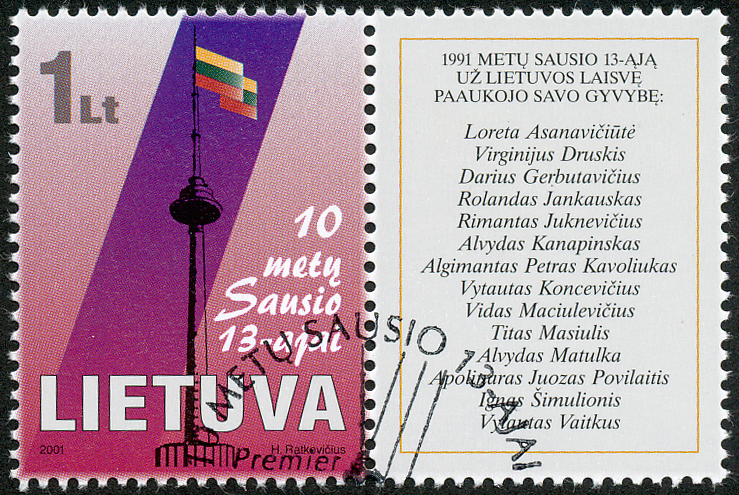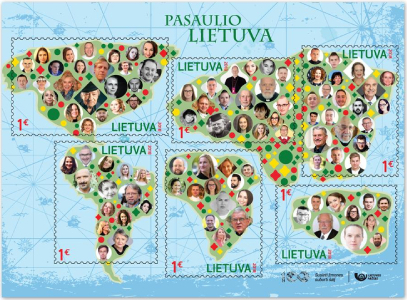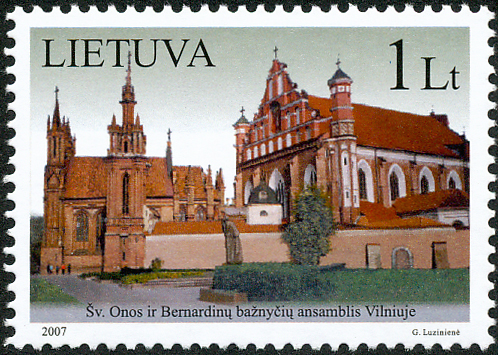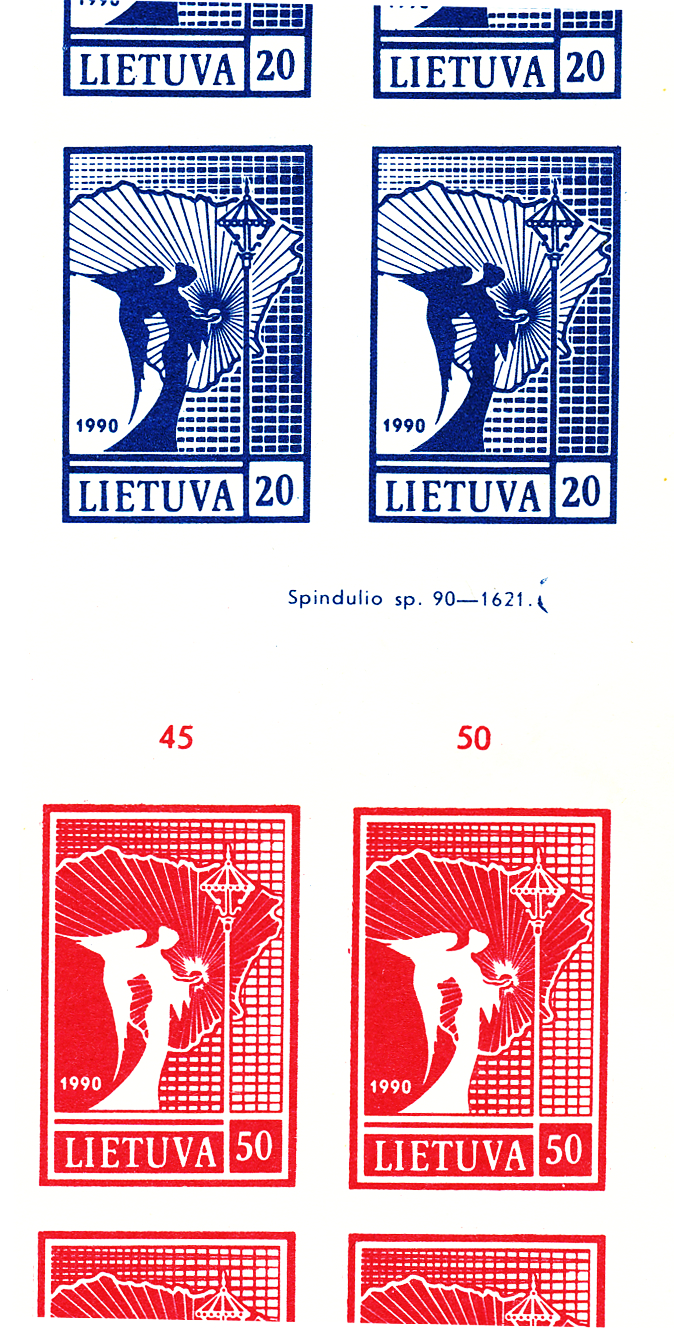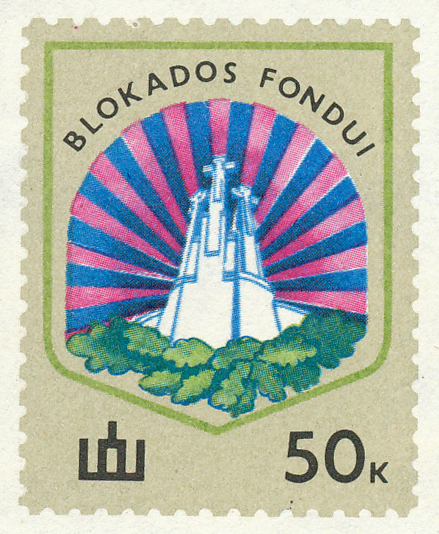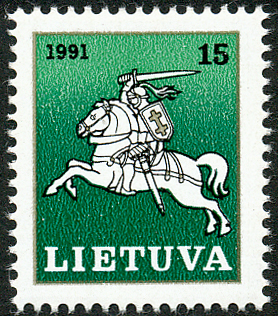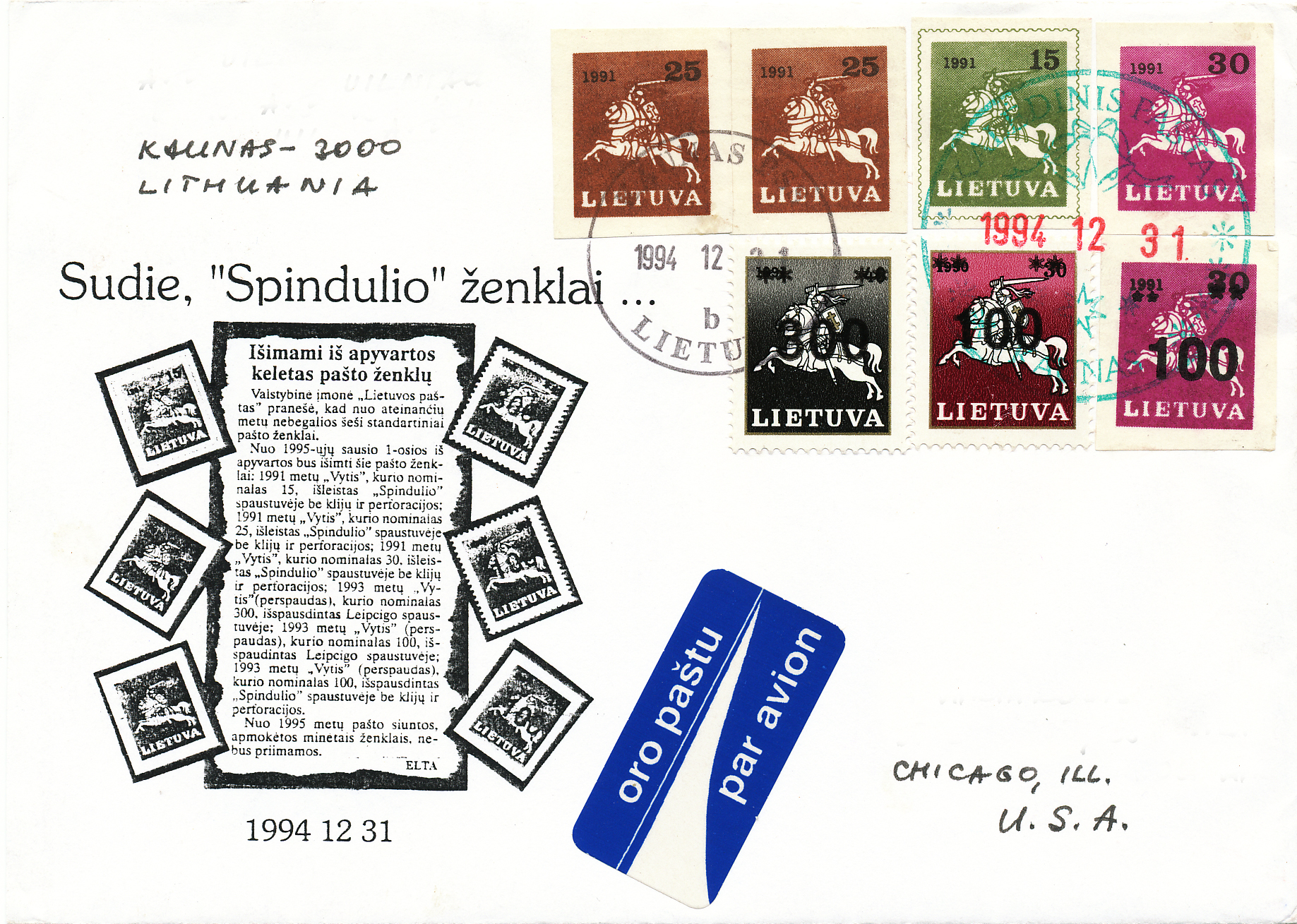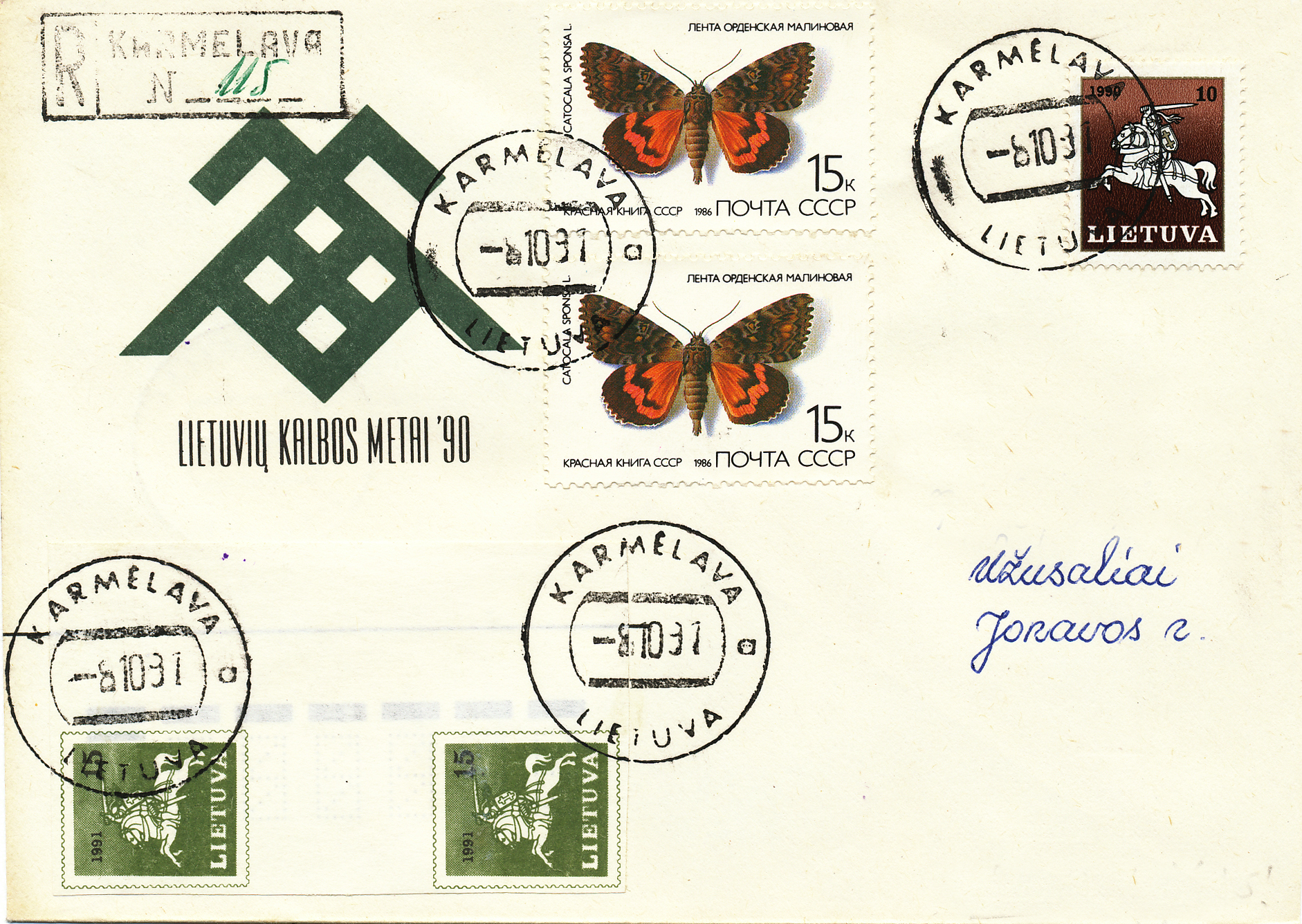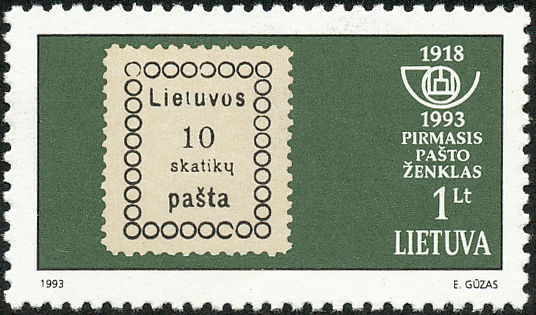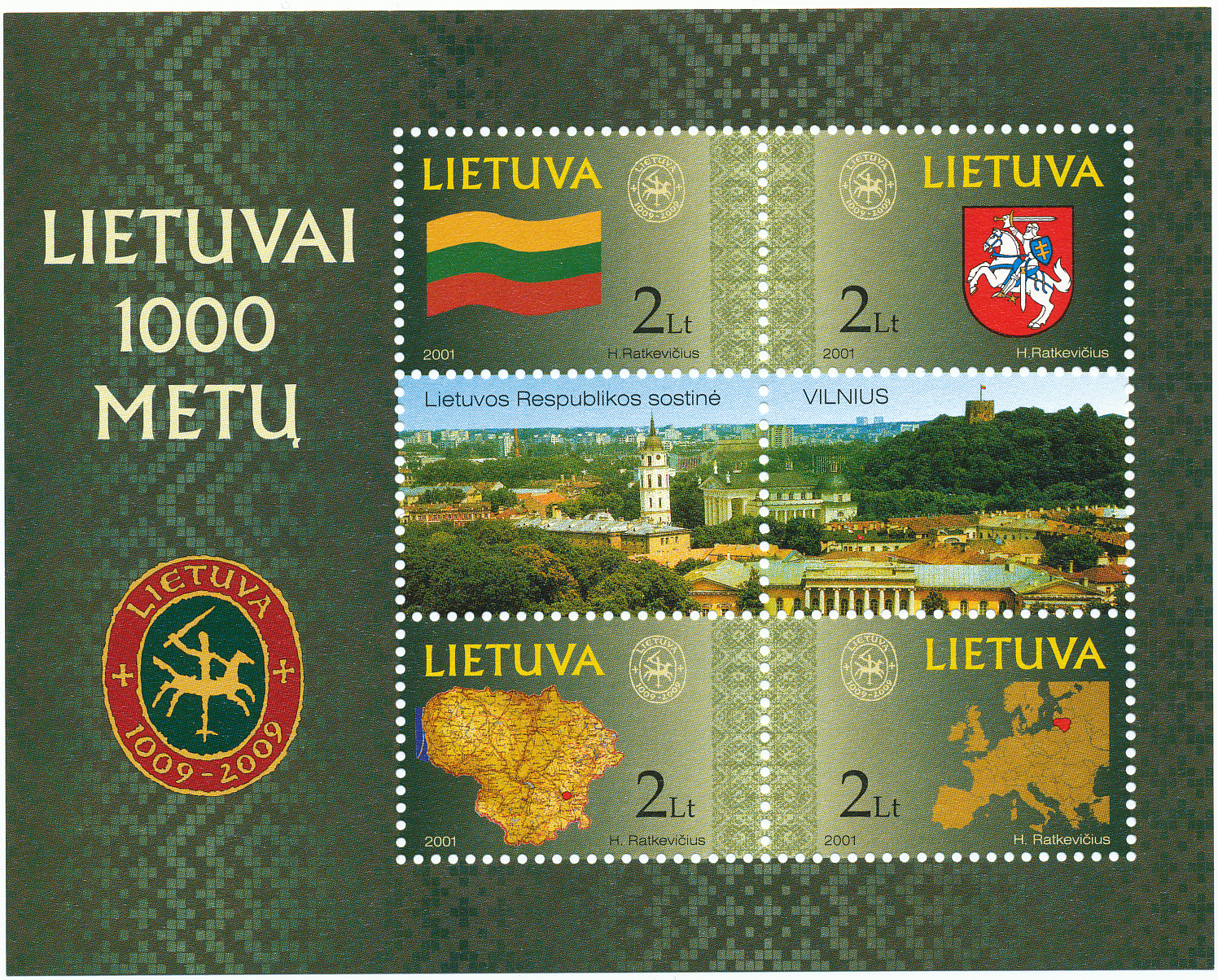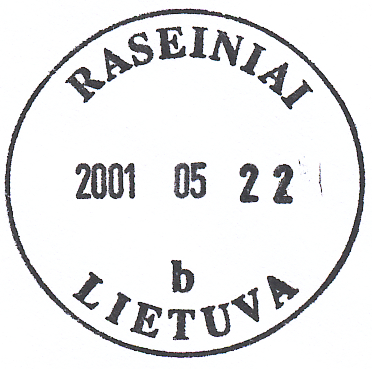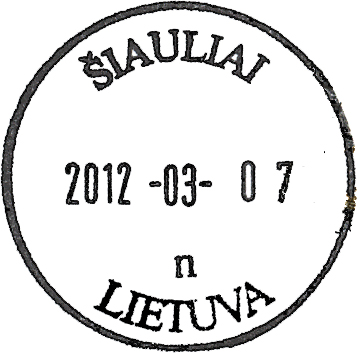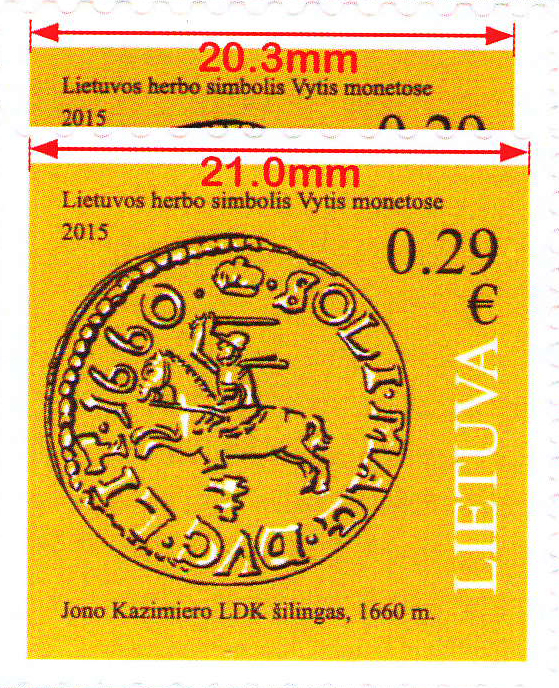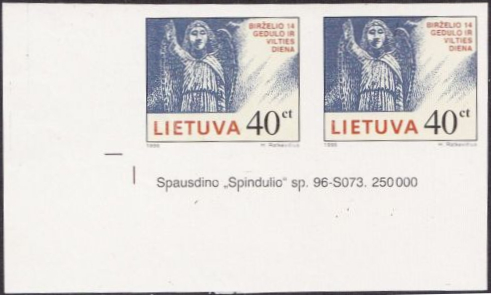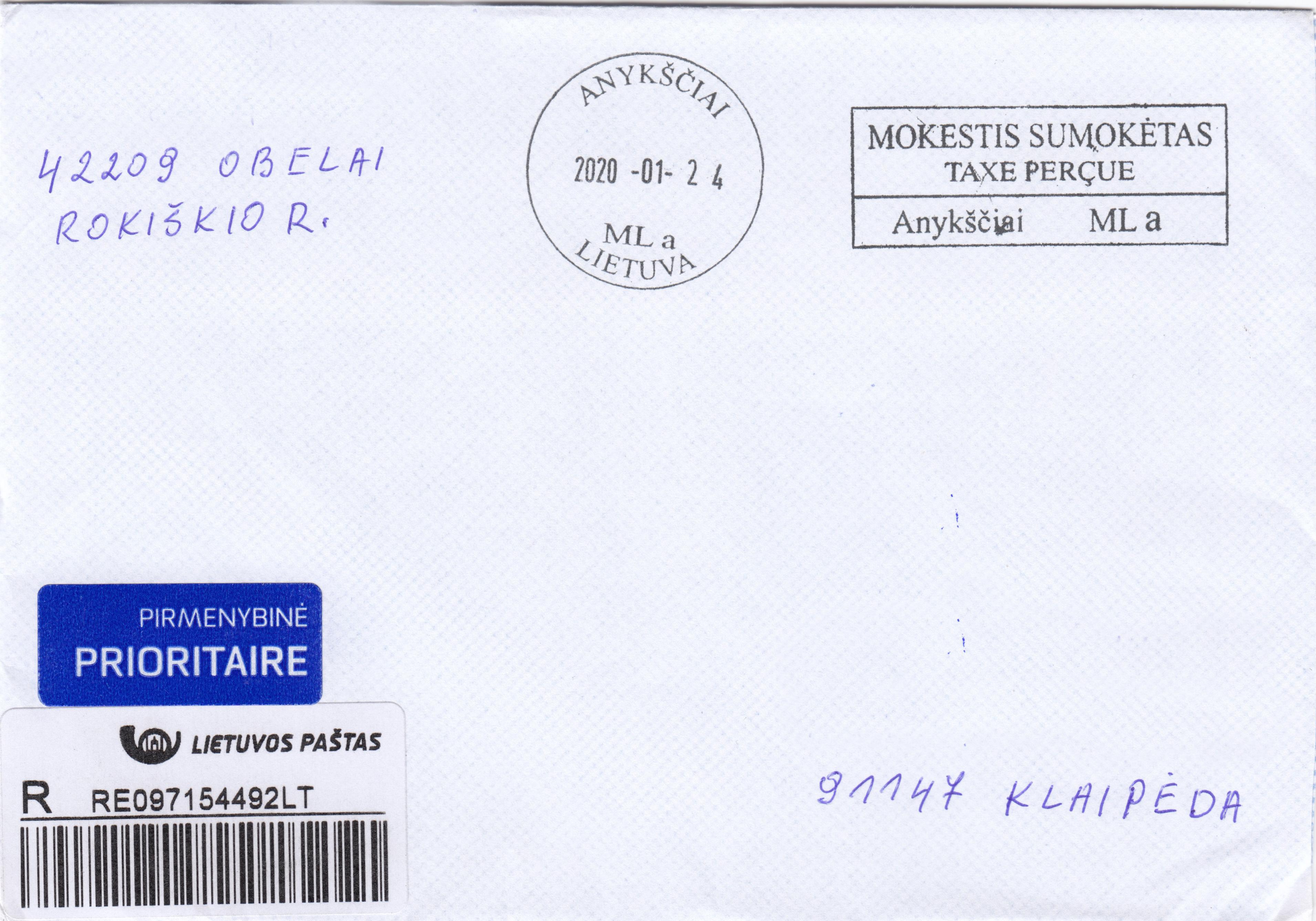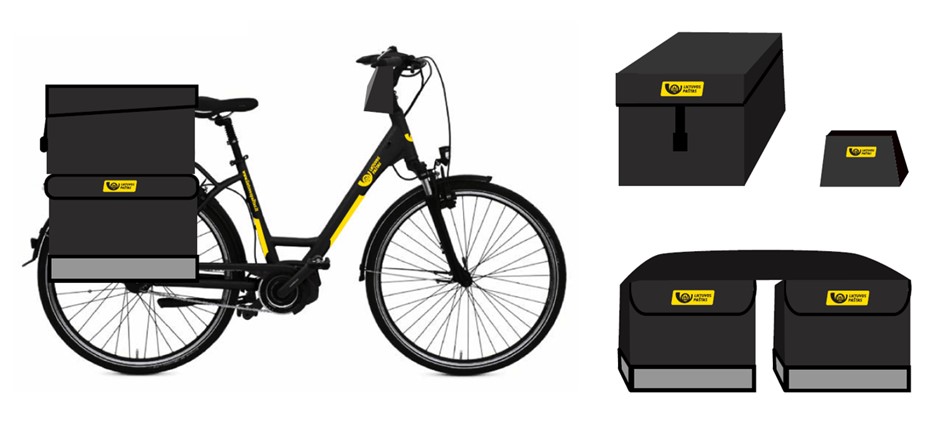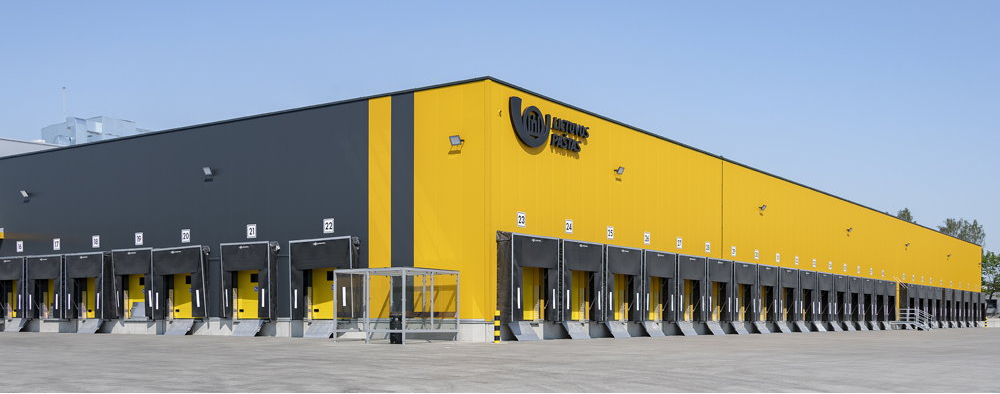Lithuania
-
Royal Polish Post
-
Imperial Russian Post
-
German Occupation / Ob. Ost
-
Independent Republic of Lithuania
-
Central Lithuania
-
Memel Area / Klaipėda
-
Soviet Occupation
-
German Occupation / Ostland
-
Camp Mail / Lithuanians in Exile
-
Independent Republic of Lithuania (restored)
Restoration of independence 1990/91
Mikhail Gorbachev, as General Secretary of the CPSU from 1985 onwards, introduced a new policy under the slogans glasnost (openness, transparency) and perestroika (restructuring, modernisation of the state system), which also gave the national movements in the Baltic states greater freedom.
In Lithuania, the SAJŪDIS movement was founded on June 3, 1988 under the charismatic politician Vytautas Landsbergis, which openly propagated Lithuania's withdrawal from the Soviet Union and its state independence.
Even before that, triggered by the Soviet Union's disastrous environmental policy, protests against remaining in the Union had become loud, e.g. during demonstrations against the Ignalina nuclear power plant.
The General Secretary of the Lithuanian Supreme Soviet, Algirdas Brazauskas, who was critical of Moscow, succeeded in dissociating the Lithuanian Communist Party from the CPSU in December 1988. He was President of the Republic of Lithuania from 1993 to 1998.
The newly elected Supreme Soviet of Lithuania in the first free elections of February 1990 declared on March 11, 1990, as the first Soviet republic, the withdrawal from the USSR and the restoration of the independence of the Lithuanian Republic. Independence Day on March 11 has since been celebrated in Lithuania – as it was in the interwar period – in commemoration of the first Declaration of Independence on February 16, 1918.
The pre-war constitution of February 11, 1938 was reinstated (and modified on October 25, 1992).
The government in Moscow reacted with force: it imposed an economic blockade and closed the border to the new state. In early 1991, 14 Lithuanian civilians died when Soviet military tried to storm the TV tower in Vilnius. Seven border guards were killed in a raid on a Lithuanian customs post.
After the failed August coup in the Soviet Union in 1991, over 90 states recognised Lithuania's independence within a short period of time.
On September 6, 1991, the USSR granted independence to the Baltic states, and on September 17, 1991, the United Nations accepted Lithuania as a member state.
From Stabilisation to the "Baltic Tiger State"
Despite the introduction of the "talonas" ("Lithuanian ruble"), Lithuania experienced rapid inflation, which only came to an end with the introduction of the litas currency on June 25, 1993. The decoupling from the Soviet economy was a lengthy process that was accompanied by setbacks until the end of the 1990s. The industrialisation and urbanisation that had been initiated in Soviet times continued. Initially, Lithuania's most important export goods remained mineral products, machinery, means of transport, textiles, wood and agricultural products.
The emigration of young people and the ageing of the resident population hampered economic development. Between 1990 and 2017, the population fell from 3.7 to 2.8 million.
The new millennium now brings the political and economic breakthrough: the gross national product (with one exception) grows between 3 and 6 % annually with a low inflation rate. On March 29, 2004, Lithuania joined NATO, and on May 1 of the same year it joined the European Union, both of which were long sought-after goals of Lithuania under the slogan "return to Europe".
Since 1 January 2015, people have been paying with the euro.
The collecting area "Modern Lithuania" as of 1990 …
… offers a lot especially for the motif collector due to the abundance of new issues. In addition, the early years 1990 to 1993, i.e. the stamps of the Ruble and Talonas periods, are of particular interest to specialists. Here, even with little money, special collections can be built up that depict the historical development very well.
Individual sets such as the two "Angel issues" or the "Vytis rider" can be expanded into special collections with essays, proofs, plate errors and reprints.
The documentation of currency conditions with inflation and rapidly increasing postage rates on postal items offers another field of activity. The overprint values of January 1993 were issued in different, easily distinguishable editions. The "letter stamps" with A and B values (see illustration below) were valid until December 31, 2016, most recently at multiples of their original value. The litas-euro dual currency stamps as well as the introduction of the euro can also be documented.
A possible disadvantage of the collection area is the flood of new issues from the mid-1990s onwards. In any case, the graphically appealing postage stamps are worthwhile; they have recently become available every year (see illustration below). The fact that unfortunately little information is available from the Lithuanian postal administration makes specialised collecting difficult. There is the occasional "express information" for the postal system, but about new developments such as restructuring, branch closures and openings, postmarks and the like, one has to rely on observers on the spot or lucky finds.
Postal historical development since 1990
The problematic start
On March 11, 1990, the Seimas (Parliament) in Vilnius declared the restoration of the independent Republic of Lithuania, thus taking the further fate of the nation back into its own hands.
As the new republic was initially not internationally recognised and Soviet troops were still in the country, the transition to independence had to be gradual.
When the Soviet Union reacted with an economic blockade, the realisation of independence was temporarily suspended.
In 1990, Soviet stamps and postmarks were initially continued to be used unchanged, but the latter were quickly replaced by remodelled stamp devices later in the year.
The new stamps for independent Lithuania were initially produced in Germany by the Leipzig Securities Printing Works.
However, the Soviet authorities did not let the stamps produced there with the national Vytis motif into the country. They could only be sold at the counters later, from January 10, 1991.
Therefore, it was decided at short notice to print stamps in their own country. The so-called first "angel issue" appeared on October 7, 1990, followed by a second issue on October 22. The simple, improvised printing was done at the "Spindulys" printing plant in Kaunas, which was already known from the pre-war period. These two series form a wide field for special collections.
Demand was high nationally and internationally, so Spindulys decided to reprint the Vytis motif as well, actually copies in inferior offset printing.
A well-known Lithuanian philatelist has produced this last day cover of December 31, 1994 with all the Spindulys postmarks and overprints. Here you can also see one of the first attractive green-red Christmas postmarks with which the Lithuanian Post delights collectors at the end of the year.
Mixed frankings with Soviet stamps were possible until 31.12.1991.
Inflation led to postage increases.
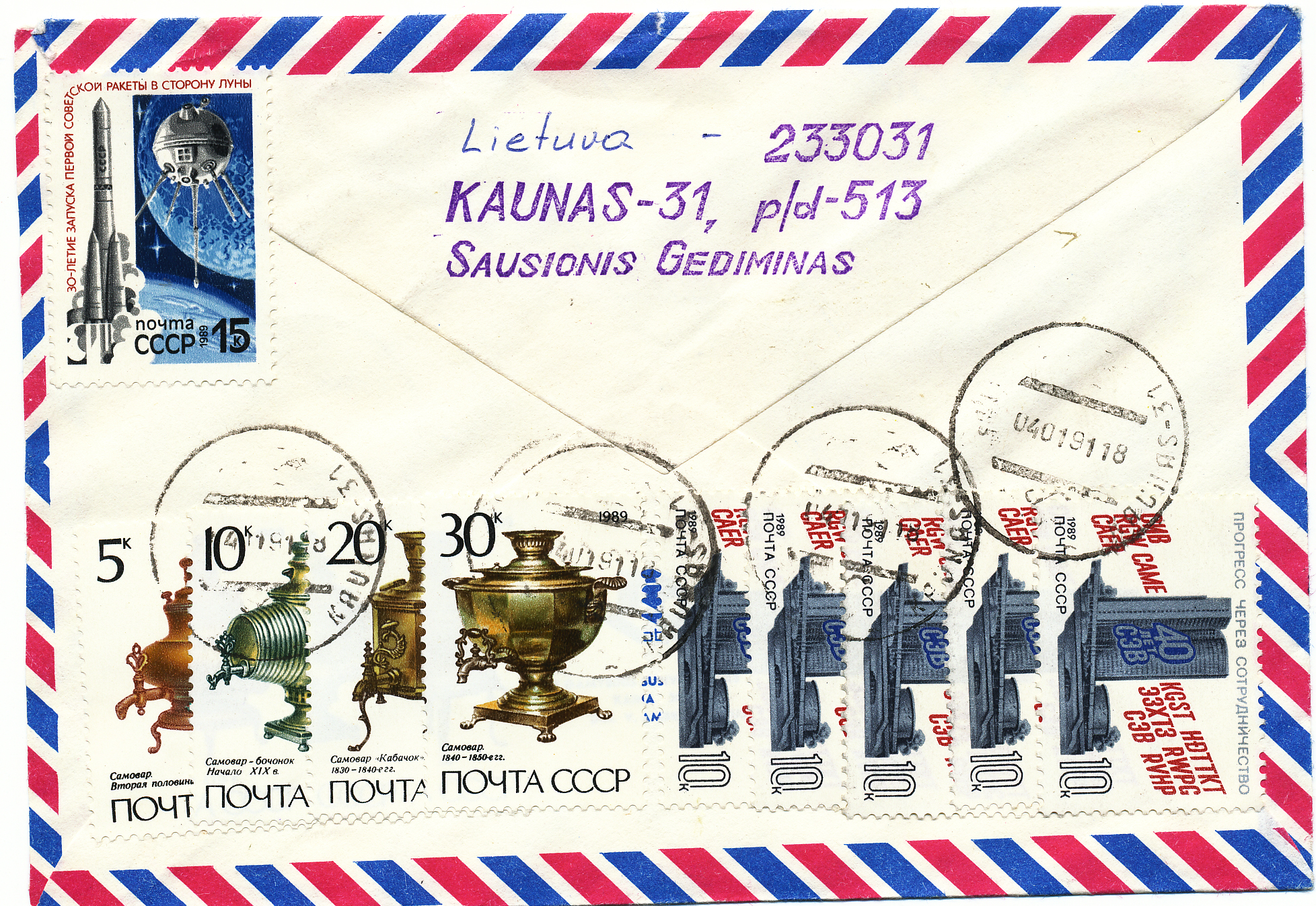
Roof tile franking with Soviet postmarks dated 4.1.91, cancelled with an altered postmark Kaunas-31 b
The membership of the Republic of Lithuania in the Universal Postal Union – accession took place on January 1, 1922 – had been dormant since its occupation by the Soviet Union in 1940/41. Until the reactivation of membership on January 10, 1992, the recognition of Lithuanian stamps, postal stationery and postmarks initially seemed doubtful. Significantly, the MICHEL catalogue did not start listing the newly issued Lithuanian stamps until autumn 1991.
Success with the litas
The introduction of the provisional parallel currency "Talonas" at a ratio of 1:1 to the Soviet ruble could not yet stop the galloping inflation. It was decided to issue "letter stamps" whose franking value changed. Only the introduction of the new litas currency on June 25, 1993 led to the desired success of monetary stability (100 talonas = 1 litas = 100 centsų).
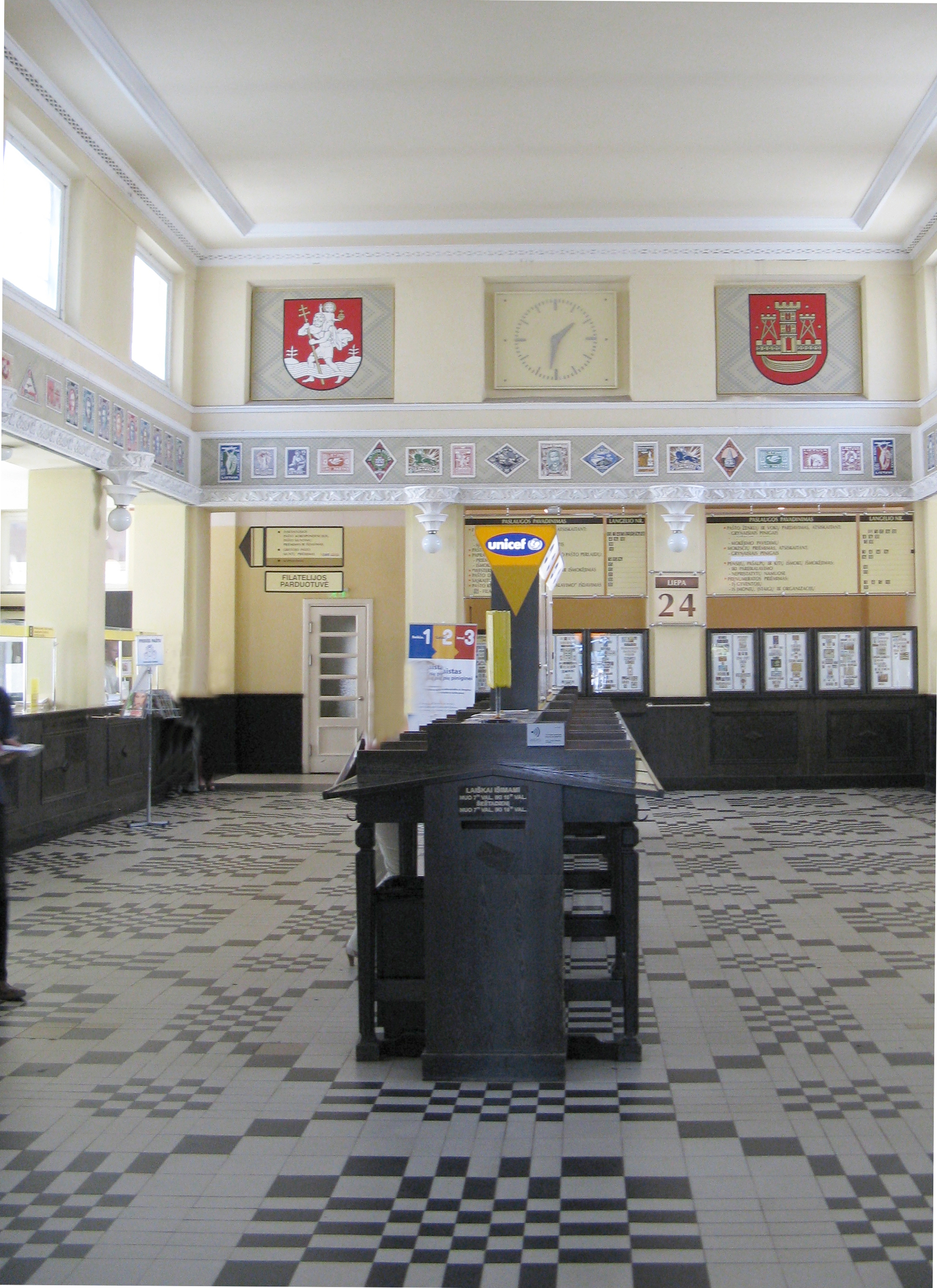
Since the mid-1990s, the counter room of the main post office in Kaunas has once again shone in the old splendour of 1930s architecture with the murals of Lithuania's first stamp emissions (see also Travelogue Kaunas 2000).
Finally, despite inflation and two currency conversions, the transition from a Soviet-determined to a national Lithuanian postal system was successful.
In 1993, the Lithuanian Post celebrated its 75th anniversary with a set of stamps.
Postmarks
From 1994, the reworked Soviet steel stamps were gradually replaced throughout the country by rubber stamps from the TRODAT company. They had a uniform format with serif lettering, a diameter of 29-30 mm and an initially clear, legible stamp impression. Soon, however, these postmarks deformed during use and produced the notorious "eggs".
Experts suspect that oil-based ink was used for the rubber stamps, which is only intended for steel stamps. Oil causes rubber to swell gradually; the striking force of the postal worker does the rest. The clear assignment of a postmark to a type should therefore only be made with an intact, clear impression.
From around 2008, new rubber stamps came into use, more pleasing and modern in appearance. These new standard stamps have a diameter of 29 mm with serif capital letters closer together. The distinguishing features of this type are shorter spacing of the letters and thus a shorter length of the country name LIETUVA at 15 mm instead of 18-20 mm.
In 2021, ArGe Baltic members Martin Bechstedt and Bernhard 'Tony' Fels launched a comprehensive internet database project with several thousand postmark entries on the daymarks of the independent Republic of Lithuania from 1990.
More information and an introduction to the stamp system can be found on our Working Aids Page!
Essays, proofs, varieties
The Postal Museum at the Central Market in Kaunas houses numerous essays, fair copies and proofs. Unfortunately, they are rarely exhibited.
Introduction of the EURO on January 1, 2015
After the global economic slump in 2008 / 2009, the Lithuanian economy recovered quickly so that the EURO (€) could be introduced on January 1, 2015. As with all candidate countries, the exchange rate of the national currency to the euro (1 euro = 3.4528 litai) was fixed some time beforehand and stamps with both currency denominations were issued in the so-called "double nominal". These appeared for the first time on July 12, 2014 (MiNo. 1165). All stamps issued since then are valid for an unlimited period. The stamps in sole litas currency (Michel numbers 526-1164) lost their franking validity at the end of December 31, 2016.
Since 2014, the Lithuanian postal administration has been delighting collectors every year with a new series of postage stamps.
Fortunately, the design is very appealing.
Imperfused varieties are offered on the market from time to time. However, one should be aware that these were illegally stolen from printers and are not recognised by the Lithuanian Post Office. Here is an example with marginal markings from the SPINDULYS printing company, which has been in business since 1925.
Personalised stamps are produced very sparingly by the Lithuanian Post. They are only issued to companies that order them, and not to private individuals, much to the chagrin of collectors. Lucky is the one who can get hold of such a stamp.
Privatisation of the Lithuanian Post
From post office to branch office
After the separation of the telephone sector, the state-owned company SE Lietuvos Paštas was founded on December 17, 1991.
As of January 2, 2006, SE Lietuvos Paštas was transformed into a joint-stock company under the name UAB LIETUVOS PAŠTAS, owned by the state. Since then, the post offices have been called branch offices.
Even after this privatisation, the Lithuanian postal administration was and is not restrained in its issuing policy. With careful graphic design, the stamps continue to offer mostly an insight into the country's history and culture.
Changes in the organisational structure after privatisation
Lithuanian post offices have also been and are being closed, especially in the countryside. They like to move them to shopping centres to be close to the customers.
In order to maintain basic services, the already existing mobile postal service was reorganised and mobile post offices with small trucks were set up in 12 regions of Lithuania as of May 2017, initially in Biršai, Kelmė, Mašeikiai, Raseiniai, Telšiai, then in other places as well (in the same year, about 125 stationary branches were closed).
The new mobile service vans have a fixed route with a timetable and offer all the usual postal services.
Letters posted there can be recognised by the postmark addition "KILNOJAMASIS" (= flexible).
Since privatisation in 2006, large branch offices – can no longer be called post offices – have been given local subdivisions. Since 2010, these subsidiaries have had uniform postmarks with the inscription "POSKYRIS" (= sub-department, branch).

(From left to right): Mobile post office, branch subdivision, academy branch (unique stamp of an agricultural academy that has been in existence for decades), mobile postman
As an additional replacement for the closed branches, the mobile postal delivery service with motor vehicles, through which postal items are delivered free of charge in rural areas, has been significantly expanded and modernised as of 2016. Money transfers, pension payments, subscriptions, magazines and parcels are now also delivered by the mobile service, no extra request is necessary.
However, a customer can also have letters and parcels collected by telephone order, as well as use a wide range of postal services: A mobile delivery agent can accept payments, sell envelopes or postcards and provide other postal services directly on site. This mobile service is thus a kind of travelling post office that comes to the individual customer's home on order if there is no longer a stationary post office there.
The Lithuanian Post has used the 2013 European stamp to advertise electric vehicles from the Italian company Tazzari, which were purchased on a trial basis for the postal service.
The deliverers use special postmarks, recognisable by the letters ML, which precede the distinguishing letters in the postmark. ML stands for "Mobilusis Laiškininkas", mobile delivery.
Mail sorting and distribution centres
Since October 2020, the Lithuanian Post has introduced a completely new data processing system: All data relating to an item will be stored digitally. End customers will notice the new system by a barcode sticker on each item. Even ordinary letters that cannot be tracked will have a barcode affixed to them.
If stamps are no longer used to pay for postage, the letters will no longer have a date stamp; this is a problem for collectors because the date of processing can no longer be determined.
How to classify the postmarks of the postal distribution centres that appeared for the first time in 2020 remains to be seen.
According to the Lithuanian postal administration, these are not post offices, but "centres" without public traffic. This is why these facilities are not included in the official overview list of Lithuanian post offices. They are roughly equivalent to the German Briefzentren or the Estonian Kandekeskused (distribution centres, singular Kandekeskus).
During sorting, normal letters receive their mark on the back, whereas R letters do not.
The following distribution centres are currently (2021) operating in Vilnius: SENAMIESCIO (established after the closure of the Central Post Office in 2020 in the Vilnius 61 post office building), JERUZALES (since 2019), KAROLINIŠKIŲ (since 2020).
In March 2021, the largest sorting centre at Vilnius Airport started operations. Almost all of the country's mail (approx. 2.8 million inhabitants) will be processed centrally in this new sorting centre.
-
Private Mail in Lithuania


